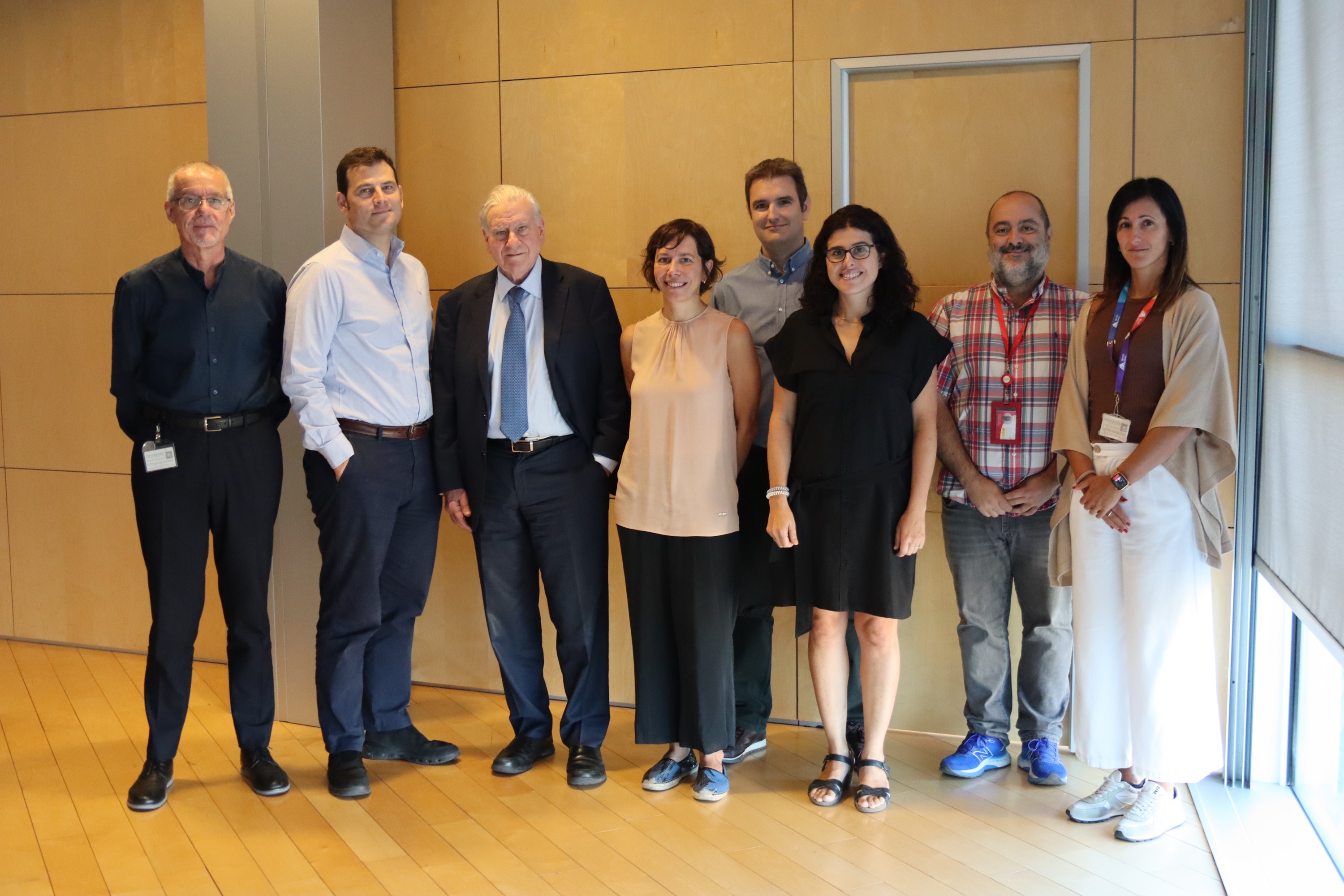JACC: Progression of subclinical atherosclerosis predicts all-cause mortality risk
A study published in The Journal of the American College of Cardiology (JACC) demonstrates that the burden and progression of silent atherosclerosis in
A study carried out at Mount Sinaí Fuster Heart Hospital in New York in collaboration with the Centro Nacional de Investigaciones Cardiovasculares (CNIC) in Madrid provides important new information about atherosclerosis, a disease in which lipids (cholesterol) and other substances accumulate in plaques on the arterial wall, causing the vessels to harden and narrow, and increasing the risk of severe cardiovascular conditions.
The study, published in The Journal of the American College of Cardiology (JACC), was led by Dr. Valentín Fuster, Director of the Cardiovascular Institute and Physician-in-Chief at Mount Sinai Medical Center and General Director of the CNIC. The study shows that both the burden of atherosclerosis and its progression (growth of plaques or the spread of the disease to new arteries) in asymptomatic individuals is independently associated with the risk of death from any cause
Despite advances in cardiovascular research, it has remained unclear if the risk of death from all causes in asymptomatic individuals can be predicted by monitoring the extent and progression of atherosclerosis, especially in the carotid arteries, which supply blood to the brain.
The goal of the new study was to determine the independent predictive value of the burden and progression of subclinical atherosclerosis above and beyond prediction based on established cardiovascular risk factors
The study included 5716 asymptomatic adults with an average age of 69 years (56.7% women) who were examined from 2008 to 2009 as part of the BioImage project, which examined a US population to evaluate factors implicated in atherosclerosis progression.
BioImage, led by Dr. Fuster, was the first study to demonstrate the value of 3D echocardiography and other advanced imaging technologies to detect atherosclerotic disease of the large vessels long before the appearance of symptoms. “The long asymptomatic phase of the disease presents a window of opportunity that has not been exploited in the younger population,” said Fuster, who is the lead author on the JACC study.

The study participants were examined with two imaging techniques. The burden of atherosclerotic plaques in the carotid arteries was measured with vascular ultrasound, which allows detailed visualization of the interior of blood vessels, and calcification of the coronary arteries was assessed by computed tomography. Joint first author Dra. Ana García Álvarez, a CNIC group leader and head of the cardiology service at Hospital Clínic in Barcelona, explained that “Carotid plaque is an accumulation of cholesterol, calcium, and other circulating substances that are deposited in the blood vessel wall. The formation of these plaques can narrow or block the carotid arteries, reducing blood flow to the brain and increasing the risk of a cerebrovascular accident or stroke.”
A subset of 732 study participants additionally underwent a second vascular ultrasound scan more than 8 years after the initial examination. And all participants were followed up to determine the rate of death from any cause, the main outcome measure of the study.
The study, concluded Dr. Fuster, demonstrates that detecting subclinical atherosclerosis early and monitoring its progression can improve the prediction and prevention of death from any cause, offering a valuable tool for clinical practice
Over the 12.4 years of follow-up, 901 (16%) of the participants died. Carotid plaque burden and coronary artery calcification measured at the start of the study were both associated with death from any cause. Moreover, progression of carotid atherosclerosis provided further prognostic information and was independently associated with all-cause mortality.
“Vascular ultrasound is a noninvasive and affordable test, and the valuable prognostic information it provides can be used to improve risk stratification and to target lifestyle recommendations for the control of cardiovascular risk factors”, underlined Dr. Borja Ibáñez, CNIC Scientific Director, a cardiologist at Fundación Jiménez Díaz, and a member of the Spanish cardiovascular research network (CIBERCV).
The study, concluded Dr. Fuster, demonstrates that detecting subclinical atherosclerosis early and monitoring its progression can improve the prediction and prevention of death from any cause, offering a valuable tool for clinical practice.











